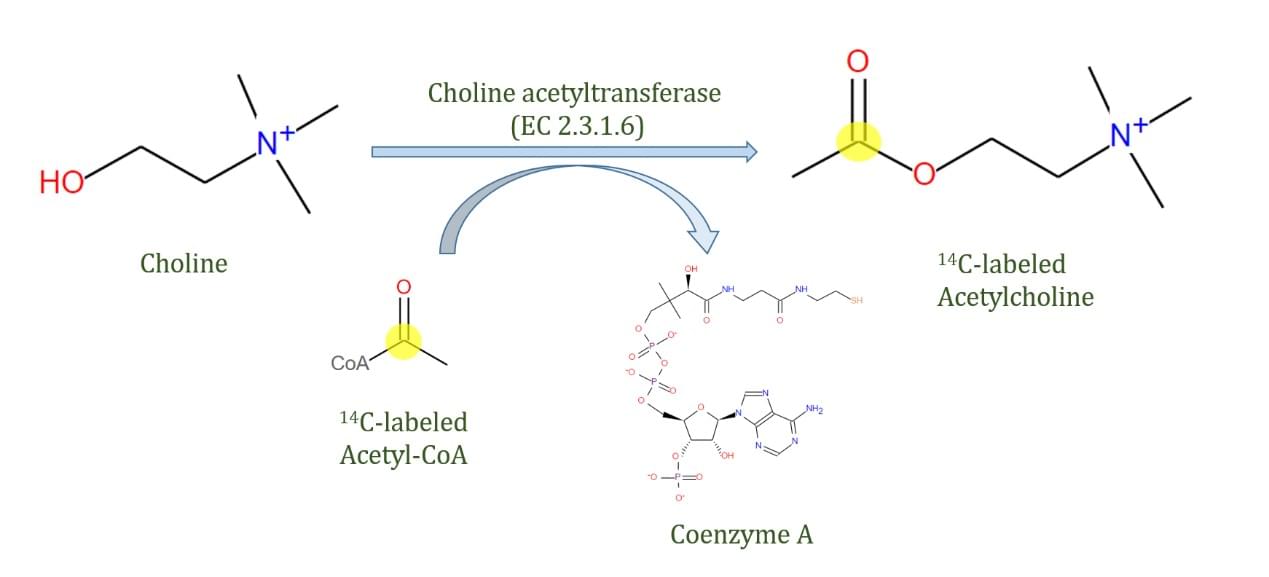Radiometric Enzyme Assays
Creative Enzymes has been granted with the largest market share in enzyme activity measuring for several years. We have the comprehensive expertise and advanced facilitates to offer the best support to your research. The professional assay approaches and high-quality testing have satisfied the need of thousands scientists. With the strong presence in method development and data analysis, Creative Enzymes can supply reliable customized services in a rapid turnover. Noticing the increasing demands in radiometric enzyme assays, Creative Enzymes established standardized radiometric assay services for enzyme activity and kinetics uses.
During the past decade, the inherent sensitivity, specificity, and simplicity of radiometric enzyme assays have resulted in a rapid increase in their development and application in many fields of biochemistry. Radiometric enzyme assays are based on the conversion of a radioactive substrate to a radioactive product. The rate of the enzyme-catalyzed reaction is determined by measuring the radioactivity of either the product or the residual substrate after separation from the reaction mixture. The availability of a simple and rapid method for quantitative separation of substrate and product is one of the two major requirements of a radiometric enzyme assay. The other requirement is the availability of a suitable labeled substrate of known specific radioactivity. Due to the radiometric enzyme assays substrates are normally used at low specific activities and can be easily determined accurately, hence the quantitative separation of labeled substrate and products is the point of enzyme testing. Creative Enzymes has extensive experiences in rapid extraction and separation, which is an assurance of accurate results.
Compares to the most conventional methods such as colorimetric or spectrophotometric, radiometric assays has many advantages. Firstly, unlike these two methods, radiometric assays do not suffer from the interference of reaction solvent, such as crude extracts which are highly colored. Besides, only measuring the radioactive products, radiometric assays is allowed to determine enzyme activity in extracts which contain high concentrations of the product. In addition, the sensitivity of radiometric assays enables them to be used over a wider range of substrate concentrations. Based on the catalyzed chemical reaction types, enzymes are divided into six classes. Radiometric activity assays can be utilized in every class.
- Oxidoreductases
Conventional spectroscopic assays are well studied for this group of enzymes because most of them utilize the large spectral shifts coenzymes including NAD, NADP, FAD, and FMN. However, to avoid the insufficiently sensitive and interference from contaminating enzymes and endogenous materials, radiometric methods have been used in their place. Also, some reactions have been studied only with crude extracts, and their cofactor and hydrogen donor or acceptor requirements are not yet known. In these situations, radiometric assay methods appear to be the only possibility.
- Transferases
This is the large class of enzymes and radiometric methods have been extensively employed in the assays. For example, as for methyltransferases, S-adenosylmethionine which labeled in the methyl group with 14C or tritium can be used as methyl donor for radiometric assays. For enzymes transferring acyl groups, acyl-labeled acyl-CoAs can be used as substrate.
- Hydrolases
In the past, these enzymes have been assayed chiefly by estimating the acid formed, by pH titration or by measuring CO2 release from bicarbonate buffers. However, a large number of radiometric assays have been described because these are more rapid, simple, accurate, and sensitive than the conventional assays.
- Lyases
Radiometric assays are frequently used for decarboxylases assays. The release of 14CO2 from carboxyl-labeled substrates is the obvious and most often used technique.
- Isomerases
Although radiometric methods have been applied only occasionally to the assay of this class of enzymes, they have been found to be much more sensitive and simple than the conventional techniques.
- Ligases
Radiometric assays are often used in ligases activity testing. For example, the aminoacyl-tRNA synthases, which catalyze the ATP-dependent formation of aminoacyl-tRNA from amino acids and specific acceptor transfer ribonucleic acids. These enzymes are highly specific, each enzyme being specific for only one natural amino acid. They have been assayed almost exclusively by radiometric methods.
 Figure: The reaction catalyzed by choline acetyltransferase using 14C-labeled acetyl-CoA as the substrate, an example of radiometric assay.
Figure: The reaction catalyzed by choline acetyltransferase using 14C-labeled acetyl-CoA as the substrate, an example of radiometric assay.
Despite several challenges associated with specific operations, radiometric assays have become important approaches in many fields. It can safely be predicted that these methods will prove to be increasingly useful, not only in general biochemistry, but also in clinical biochemistry, particularly in the study and diagnosis of diseases caused by inherited enzyme defects. Creative Enzymes always has the keen insight into enzyme service industries and closely follows the advanced techniques and urgent demands. Our radiometric enzyme assays enjoy the best-in-class quality and fast turnaround. Please contact us for technical support and service inquires.
Related Services
Enzymology Assays
Enzyme Activity Measurement